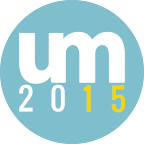
Latest News
December 21, 2015
 Product complexity is driving engineers to find software that can process lots of data within the same environment. To address trends in data management and optimization, ESTECO hosted its modeFRONTIER user meeting from Nov. 4-5. The two-day event in Novi, MI, focused on how ESTECO helps engineers integrate design, simulation and lifecycle data into an available framework. In addition to a day of training, attendees also saw examples of multidisciplinary design optimization (MDO) throughout industries such as automotive and aerospace.
Product complexity is driving engineers to find software that can process lots of data within the same environment. To address trends in data management and optimization, ESTECO hosted its modeFRONTIER user meeting from Nov. 4-5. The two-day event in Novi, MI, focused on how ESTECO helps engineers integrate design, simulation and lifecycle data into an available framework. In addition to a day of training, attendees also saw examples of multidisciplinary design optimization (MDO) throughout industries such as automotive and aerospace.
Simulation Optimization at Ford
This year’s event featured Mario J. Felice of Ford Motor Company as the keynote speaker. The organization has been a large proponent of ESTECO’s software since its adoption of an Enterprise MDO framework last year. His talk, titled “Multiphysics Simulation as Applied to the NVH Refinement of Ford Motor Company’s Powertrains,” focused on some of the main challenges generated by CAE data and HIL (hardware in the loop) integration. With MDO and modeFRONTIER, Felice stated these tools help find the optimized seat track idle vibration, and a design that addresses NVH as well as fuel economy standards. Going forward, his goal “is to have variations incorporated into CAE processes and MDO applied to all projects of my global team,” Felice said.
@Ford ‘s Mario Felice kicking off the #mFUM15 now > #simulation & #optimization for NVH refinement #modeFRONTIER pic.twitter.com/L6KZlBEjSi
— ESTECO (@esteco_mF) November 4, 2015
Conference goers were able to listen to other applications from Ford, BorgWarner Turbo Systems, Modelon and academic institutions. Optimization use cases included system models, commuter motorbikes, restraint systems, steady-state CAM processes and positive displacement pumps. (Editor’s Note: Visit ESTECO for a resource library of presentations.)
Hands-on Experience
To have attendees see modeFRONTIER’s capabilties for themselves, the event also included a one-day course of basic or advanced training. Topics covered included and introduction to modeFRONTIER, building workflows, running DOE, RSM-based optimization, as well as data analysis.
Advanced users were able to learn about problem formulation, optimization strategies, workflow patterns and multivariate analysis.
Expanding Product Capabilities
This year’s user meeting also gave attendees a larger picture on the newest advances for ESTECO’s SOMO and modeFRONTIER softwares. Overall, the company is adding larger integration capabilities for outside PLM systems and the Adaptive Space Filler for space exploration functionality.
“Technology innovations [should] take effect at both the functional and architectural level,” said Danilo Di Stefano, product manager in his modeFRONTIER presentation. To support these innovations, ESTECO is working to refurbish the design space GUI, improve workflow actions and add code refactoring to support modular packaging of modeFRONTIER.
New to modeFRONTIER 2014 are updates for integration and process automation, self-adapting one-click optimization algorithms, stepwise regression capabilities and Adaptive Space Filler. “It is a new modeFRONTIER scheduler which combines a space-filling algorithm with responsive space models,” explains Di Stefano. Once the optimized model is generated, it is saved automatically in modeFRONTIER for design usage. This is a step for providing more automated optimization practices through generative algorithms.
 For modeFRONTIER, the company is expanding how users can design optimization strategies. Image courtesy of ESTECO.
For modeFRONTIER, the company is expanding how users can design optimization strategies. Image courtesy of ESTECO.For SOMO, ESTECO has currently added more direct integrations with Siemens PLM Teamcenter and PTC Windchill. To complement this, advanced search capabilities as well as a data store node have been added so users can find data to implement quicker. A SOMO node is also available for composing MDO processes from PLM systems.
Future updates, such as the upcoming SOMO 2.0, “will focus on better managing and versioning all the simulation required for the simulation process and generated by the simulation,” noted Matteo Nicolich, product manager. This means having a folder tree structure file system, a standalone version control system and permissions based on users for each simulation project.
The discussion on multidisciplinary optimization will continue in 2016 in Trieste, Italy, under the focus of “The Speed of Innovation.” Interested persons are encouraged to submit an abstract detailing how ESTECO is helping design decision-making within the age of rapid data aggregation.
Subscribe to our FREE magazine, FREE email newsletters or both!
Latest News
About the Author
Jess Lulka is a former associate editor for Digital Engineering. Contact her via [email protected].
Follow DE





